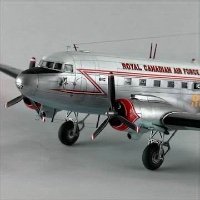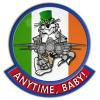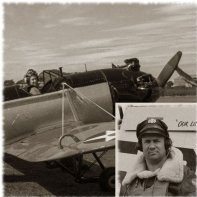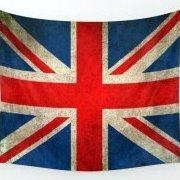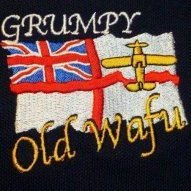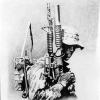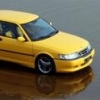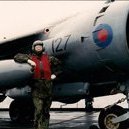Search the Community
Showing results for tags 'SAR'.
-
A few pics of my latest build, a Belgian Air Force Sea King Mk.48 based on the 1/72 Revell kit and using the excellent decal sheet from DACO Products. For me, the Belgian scheme is one of the most attractive Sea King schemes out there. I really like the combination of the bright orange with the sand and spinach camouflage. Matching the green was straightforward. I used MRP-376 which is their version of Olive Green BS220. Matching the sand was more of a challenge. Following some exchanges with @janneman36, @825 and @thorfinn, I finally went for Xtracolor X813. This is actually an armour colour that I used c.15 years ago when building a Gulf War Challenger (BS361 Light Stone). Despite its age, it sprayed very nicely. Finding a good match for the Dockerblaze orange was also challenging. After various trials with Humbrol and Tamiya, I opted for an automotive colour from Zero Paints in the end: ZP-1057 Jägermeister Orange. I had to scratchbuild the radar at the left of the cabin. It's not 100% accurate, more representational than anything but "good enough and done" is the right way forward. I cobbled it together from 2 balls of Milliput, a Little Cars lens and some plastic card. All in all, it was quite an involved build and I am pleased to have got this one over the finishing line. The Revell kit still holds its own despite being over 20 years old. I actually like the raised rivets and the subtle surface detailing. The kit goes together well and is sharply moulded. Cheers Richard C.
- 17 replies
-
- 52
-

-

-
My newest model is a NA-145 Navion in U.S. Coast Guard livery used by U.S.Coast Guard to SAR duties. Base was a Valom kit - quite good one except decals. They're absolutely useless due to some ekhm... mistakes (e.g. "USCC" in place of "USCG"). Some scratch parts are still needed although Valom added some resin parts. Panel lines are too strong, but... I had to cut off whole front part (I forgot about extra weight in nose) when all model was painted so "strong" panel lines were easiest way to mask a cut edge. Anyway I hope you will like it
- 10 replies
-
- 23
-

-
I spent some time in Roskilde, Denmark last summer, and as well as discovering that all Danish women are supermodels, I was lucky enough to have the RDAF flying their Merlins overhead 2-3 times a day, all week. Obviously, I fell in love (with the helicopters... I swear!) and vowed that I would try to model one when I return. Well, it took some time, but here it is! My humble attempt at a Danish SAR Merlin Mk.512. It started life as the Skyfall boxing of Italeri's 1/72 Merlin (HC.3?) The kit itself isn't too bad. As much detail in a kit as you would expect from a 1/72 helo. There were a few fit issues that i found. The sides of the fuselage that come separate weren't great, as was the main canopy/windscreen. The tail was a nightmare. I don't know if it was a moulding error, but there were no tabs to insert to add stability to the join. I knocked it off about 3 times before I ended up fabricating supports internally for it myself. Other than that, the kit seems pretty well designed. I used the Eduard PE set for cockpit detail & seatbelts, and was very happy with the outcome. To turn it into a Mk. 512, I used Heritage's Danish Merlin conversion set. Being both my first experience with resin and with converting a model, I can't really compare it to anything... I was pleased with the conversion set... the moulding seemed decent and it had everything I needed (I think...) For decals, the only option I really had was the Model Alliance World Air Power set 1. The decals themselves were great. They went on perfectly, and were really crisp in detail. The problem with the set, however, was the actual decal set. I had heard before that they weren't great, but didn't really think they would be as disappointing as they were. As well as being very incomprehensive, there were also some pretty epic mess-ups. The danger stencil for the rear rotor, for example, read 'Fare - Avle Lys.' Now, my Danish isn't great (Kamelålså?) but I'm sure any Dane will tell you that that is a load of rubbish. I managed to find the correct 'Fare - Pas På' stencil from the HobbyBoss Danish Lynx, but unless you are desperate, I wouldn't recommend the Model Alliance set to anyone thinking of using it. Other than that, any extra detail was scratchbuilt. Well, attempted, anyway. My scratchbuilding skill leaves a lot to be desired. I used Revell & Tamiya Acrylics, and was my first attempt using my new Testors Aztek airbrush. Although I'm very far from mastering it, it makes a huge difference over my dodgy £15 Humbrol Airbrush. The end result is far from perfect - Maskol buggered up my clear parts in a few places, and I think I was a bit hasty to get it finished, but I'm pretty happy with the outcome. It's difficult to do such a pretty piece of kit justice, but hopefully I've not done too bad! I'm operating a don't ask, don't tell policy on all the mistakes and inaccuracies, but I'm sure some of you can pick them out. Maybe it's one I don't know about, so comments and criticism is more than welcomed. Sorry about the pic quality too. Maybe now I have a new airbrush, I can save for a new camera! Anyway, that's my essay done. Hope you enjoy, and thanks for looking! Daryl.
- 29 replies
-
- 27
-

-
- 1/72Merlin
- Danish
- (and 4 more)
-
Search & Rescue Vessel Hermann Marwede Platinum Edition (05198) Revell 1:72 - Limited Edition The Hermann Marwede is the largest rescue vessel operated by the German Society For Sea Rescue or Die Deutsche Gesellschaft zur Rettung Schiffbrüchiger (DGzRS) to give them their correct German title. Like many such organisations of its type the DGzRS receive no government funding but rely on voluntary contributions to finance the organisation. The DGzRS was founded in 1865 by uniting many smaller organisations, and now celebrates its 150th Anniversary. It is interesting to note that during WWII they operated under the Red Cross and upheld their principles of rescuing anyone in distress. They have know grown into an organisation with 60 lifesaving vessels in 54 stations on the German Coastline. It is estimated over 82000 people have been saved by the organisation since its founding. Please visit the DGzRS website if you wish to read more about the organisation. The vessel was built by Fassmer in Berne and launched in 2003. She is 46m Long with a beam of 10.66m, a top speed of 25 Knots; with power being provided by three 9250 Shaft hp diesel engines each driving it's own shaft. The unrefuelled range is nearly 4000 Kms. The vessel features a fully equipped hospital unit, helicopter landing pad, fire-fighting water canons, and a stern launched rescue boat. The Hermann Marwede is stationed on the island of Helgoland. The vessel is named after Hermann Marwede a co-founder of the Becks Brewery (very apt for sailors), he was a past president of the DGzRS. Construction of the vessel was in the main funded by donations from the Marwede family. The Kit The first thing you notice about the kit is the sheer size of the box. It has to be this big to contain all of the plastic! Filling one side is a single piece hull, a further 8 sprues of white plastic, and one clear sprue. Construction starts inside the main hull with the fitting of the two bow thruster units. These each have their individual propellers fitted before the units are mounted to the hull. Then on the outside of the hull the three shafts, their propellers and individual rudders are fitted. The bow anchor is also fitted at this time. Once the outside of the main hull is finished it can be mounted on the supplied stands to aid the rest of the construction. The forward hull sides along with the forward railings are then fitted. Life-rafts are fitted to the rear bulkhead of the main deck. The main deck forward and aft is added into the hull at this stage, along with the stern bulkhead of the vessel. The instructions have the modeller adding the hull fenders at this stage. Though as these are a different colour to the main hull they are perhaps best left until last? Once the decks are in place construction moves to the aft main deck, and in particular the launching ramp for the fast rescue craft with work being done in this area to construct where the rescue craft will sit. The main deck railings are the next to be added, with smaller sections on the stern of the vessel. Once the railings are fitted a whole host of deck fittings need to be added on. Winches, bollards, deck hatches, life rafts, and an anchor windlass are all to be fitted. Next on the construction agenda is the upper deck house. This is assembled along with the ladders and railings which lead down to the main deck. A main towing winch is assembled and added behind the main deck superstructure. More railings and deck fittings are added at the deck house level. Next the pilot house / bridge deck level is added. Even though there is glazing all around this there is no interior at all provided. In this scale I would suggest this something Revell missed. Once this section is complete the deck mounted crane can be assembled. The next major area for construction (and the last) is the deck house / helicopter landing pad which is built over the fast rescue boat launching area. The plastic does a good job of simulating the steel texture of this area, though some sort of photo-etch would have been much better. The area also has its railings and ladders added at this time. Moving back to the main structure three fire-fighting cannons are assembled and installed behind the bridge. Three search light units are assembled and added to the forward top of the bridge. Then a whole host of aerials, antenna, and other items are added to the bridge roof. The last item to be added in this area is the mast arrangement. This also carries a wide range of radar antenna, navigation lights, and other aerials which all need to be added. The completed mast can then be installed onto the vessel. The last items for construction is the fast rescue craft, and the stern door which opens to allow it to be launched. In this scale the fast rescue boat is a kit in its own right. The main hull is split into upper and lower sections. Once these are together the deck house is built up on top of the boat. A full interior control section is supplied as this can be seen from the partially open rear area and rear mesh screen. Again the plastic here gives a good impression in this scale but a touch of PE would go a long way. Once the launch is completed it can be mounted in the vessel or used separately in a diorama setting. Decals The decal sheet is fairly small considering the size of the kit. The decals in this boxing are printed in Italy so there should be no Issues. The Platinum Parts This is what this boxing is all about. I know Eduard had made some PE sets for this kit and that's what I was expecting in the box; however it would appear these are new seta from Revell. There are two large Nickel frets, a large brass fret, and a smaller Nickel fret of PE parts. As well as this there are a whole host of brass parts as well. These are all accompanied by a set of colour CAD instructions for their construction and placement. As good as these instructions are they layout is not flowing and some parts on the frets I fail to find on the instructions? The PE parts are mainly for the Doors, Window frames, ladders, bulwark details, structure details, bridge protection bulwark, masts, hatches capstans, aerial frames, fire fighting monitors, and life rafts. There are some parts marked not for use on the PE set 1, these look to be errors only noticed later and corrected on the 4th small fret. No details for the railings or more surprisingly the heli deck, or small rescue boat are in the set. Perhaps they are relying on the modeller finding the Eduard sets for these? As well as the PE sets Revell offer 37 brass parts with the kit. These include 16 mast lamps, 4 antennas, 3 mast poles, 2 capstans, and 1 each of a horn, light, hook, staff, rigging pole, and fire pipe. All of these brass items look to be first class. Some of these will combine with the PE items for the masts to make them stand out. Conclusion Even though the kit is oldish now this is only its third release so the molds are as good as ever. The inclusion of the PE and Brass bring this more into line with what serious modellers are expecting these days, however it does feel like some areas have been ignored with these sets. Recommended if you want a kit of this vessel with the additional PE and brass parts. Currently, Revell are unable to ship to the UK from their online shop due to recent changes in import regulations, but there are many shops stocking their products where you can pick up the kits either in the flesh or online. Revell model kits are available from all good toy and model retailers. For further information visit
-
XZ585 Westland Seaking HAR.3 RAF Coltishall 202 Sqn 1986 This is my attempt at the old tool Airfix Seaking, and well its a meh. The first issue with this, is that is has a crack on the starboard side, which i couldn't be bothered to do much to it to fix it. I have heard alot of bad about this kit, and If im honest i didn't experience many problems (apart from some odd shapes for the seaking) The worst fitting place was around the inlets but even that wasn't difficult to get rid of. Yellow is a few layers of Tamiya Xf-8 and a couple layers of X-3. Decals have a slightly milky look, but im putting that down to the age of them. The real let down is the exhaust staining i attempted, but that can be an excuse to buy a new tool one. Here is the WIP
- 14 replies
-
- 31
-

-
After a short break and some deliberation, this will be my first build of the year. It’s an old kit but looks like a Sea King to me, and I need one to go with these: The kit only includes 22 sqn markings, but my Wessex is already 22, so I’m going to do the Sea King in its more familiar 202 sqn markings. I remember visiting RAF Boulmer as a kid in the 80s and sitting in a Sea King cockpit, so I might do this one as that aircraft, XZ587. Luckily I have some decals left from the Whirlwind with 202 badges included. Plenty of yellow left too! All advice very welcome, especially about the interior! And obviously any cool anecdotes from any ex-Sea King/SAR types ...
-
Hi all, Just finished this for the Rotary Wing/Vertical Lift GB here on the forum. The full build thread is here but to recap: Kit: Dream Model SA-565 Panther built as a SA-365 Dauphin 2, Irish Air Corps, S/N 248. Paints: Halfords Primer, Revell Acrylics with airbrush. Klear, Flory Models Wash, satin W&N varnish. Decals: Max Decals for Irish Air Corps Extras: Cut open left door, added seats & details to rear cabin. Scratchbuilt winch & searchlight. 301 Squadron badge kindly donated by a good friend. Dauphin 248, callsign 'Rescue 111' was tragically lost along with its crew on the night of 1st/2nd July, 1999 at Tramore, Co Waterford following a successful SAR mission.. Built as a tribute to the crew. Dream Model_Irish_Air_Corps_SA365_Dauphin (2) rs by Dermot Moriarty, on Flickr Dream Model_Irish_Air_Corps_SA365_Dauphin (8) rs by Dermot Moriarty, on Flickr Dream Model_Irish_Air_Corps_SA365_Dauphin (5) rs by Dermot Moriarty, on Flickr Dream Model_Irish_Air_Corps_SA365_Dauphin (3) rs by Dermot Moriarty, on Flickr The 301 Squadron badge is the Celtic cross of St. Brendan the Navigator with the North Star overhead. Dream Model_Irish_Air_Corps_SA365_Dauphin (14) rs by Dermot Moriarty, on Flickr And the memorial window in the chapel at the Irish Air Corps HQ at Baldonnel, Dublin. Baldonnel base church window by Dermot Moriarty, on Flickr Church dedication by Dermot Moriarty, on Flickr Thanks for looking and stay safe. All the best, Dermot
- 5 replies
-
- 22
-

-
- SAR
- Irish Air Corps
-
(and 1 more)
Tagged with:
-
Last weekend I decided to build something "fresh". I've just received a parcel with model of Agusta-Bell 47J with SAR markings so choice was quite easy Very shortly appeared that idea to build something Out-of-the-box is impossible if I'm thinking about something similar to real helicopter... At the end after eight days of work and making many mistakes I can present to you my newest model
- 12 replies
-
- 35
-

-
- Agusta-Bell
- SAR
-
(and 1 more)
Tagged with:
-
Just finished vintage model of Mitsubishi MU-2S built as an OoB. Total failure with decals 40-years old were to weak for proper applying even after Microscale Liquid Decal Film. Some are (re)painted, and decal edges are still visible (even on photos below) even after (careful) sanding. If you have it in your wardrobe - buy a new ones or reprint your decals! MU-2S is a special version of MU-2 built for J.A.S.D.F. with few modifications: radar (and radome), bulb windows, doors opening during flight and (due to that) unpressurized cabin. Main role: Search-And-Rescue
- 6 replies
-
- 26
-

-
- MU-2S
- Air Rescue
-
(and 1 more)
Tagged with:
-
Hi all and am taking the plunge with this one, as displayed to the public about a month before my arrival in the summer of 1968! Heller Alouette III_Box by Dermot Moriarty, on Flickr The Aircraft Alouette III's Nos 195 and 196 entered service with the Helicopter Flight of the Irish Air Corps on November 25, 1963. The first helicopters to serve with the Air Corps, eight in total flew in SAR, air ambulance, army co-operation and emergency relief roles until 2007. It's a credit to the crews and maintenance teams that 6 of the 7 machines still in service in 2007 were airworthy on their last day of ops, 44 years on. The 1968 Ballyfree Air Rally...and Tim Philips Tim Philips was an English entrepreneur and businessman whose father invented and patented the Ziplock. After selling that patent, his father moved the family to Ireland and bought Ballyfree House and grounds in Glenealy, Co Wicklow just outside Dublin. Educated in England, Tim worked in insurance following a short commission in the Royal Dragoon Guards before joining the family business in Ireland which was eggs - by the mid 1960's, their farm in Glenealy had over 120,000 hens supplying eggs to the Irish market. He also diversified the business into poultry farming and convenience foods which became highly successful. It was sold to global food company Kerry Group in 1985. Tim also had a passion for flying and kept his own plane in Glenealy. One of his personal aviation achievements was competing with co-pilot Vyrell Mitchell in the England to Australia Air Race in 1969, finishing fourth out of 75 starters in his Piper Twin Commanche. At home, he also staged and arranged a number of hugely popular Air Rallies (Flying Displays) in the 1960s at Ballyfree……...which is where Alouette 195 displayed in June 1968, the month before my arrival. A generous donor & charity supporter, Tim Philips passed away in 2010 aged 72. You can watch Alouette #195 in action on this 8mm cine which I found online - this was a big help for me getting going with this GB and excellent refs for the scheme she wore. 1968 Ballyfree Air Display The Kit I built this kit as a kid but it's long gone so time to give it another shot. Heller Alouette III_Contents_1 by Dermot Moriarty, on Flickr Lovely red sprues with tiny parts! Heller Alouette III_Contents_2 by Dermot Moriarty, on Flickr Heller Alouette III_Contents_3 by Dermot Moriarty, on Flickr Clear parts and decals. Apart from stencils, the specific Irish ones will be from the stash. Heller Alouette III_Contents_4 by Dermot Moriarty, on Flickr Sorry for the long read, good luck with your builds and model-building to follow shortly! Cheers, Dermot
- 18 replies
-
- 12
-

-
This is the second framed Sea King I've built. The first was made for a friend who wanted it for a gift for a Sea King pilot. He liked it so much, he asked for a second one for himself! The kit was made with two M3 nuts built into the starboard side. Brass tube spacers hold the model off the backboard while M3 studding hold it in place. The background is a 12x8 photo print with the graphics done on my laptop. The starboard side sponson is fitted directly to the fuselage, omitting the small wing, in order to reduce the overall depth of the model and frame. The rotor head was modified to allow the rotor blades to be stowed.
-
About to start the Academy 1:48 HH-46 - It'll be a USMC SAR machine from Kaneohe Bay using the kit decals and the Eduard kit-specific 'Zoom Set'. Been a while since I posted a build project here on Britmodeller, hope you can make time to follow along. Stay tuned because the first progress pics should be up tomorrow. AFN Ian.
- 40 replies
-
- 10
-

-
-
- Flying boats
- SAR
-
(and 1 more)
Tagged with:
-
I eventually finished this a few months ago but just realised i hadn't posted an RFI. This is the Italeri 1.72 version. The kit is not accurate for a modern version so I attempted to correct and update it. There are numerous mods, some enhance it others are a bit meh, I have worked with these aircraft over the last few years and that spurred me to add as much detail as possible. A list of the main mods are- Complete build of cabin with sound proofing, seating and SAR cabinets New tail rotor Heat blankets Numerous aerials Double rear wheels Modified ramp Modified sponsors Scratch built hoist Scratch built nightsun Aluminium tube exhausts And many more, I'll post a link to the WIP when I find it! Decals are from Belcher Bits and paints as ever are Model Master acrylics. The cockpit framing was done with electrical tape but over time it has slipped and needs redoing. Whaddya think???? And for what it's worth the fully detailed interior. It's there believe me lol! Photos aren't great as they are taken with my phone in a dingy basement. Not my best and it looks a little messy to be honest but glad it's over and does look fine amongst my collection. Cheers now Bob
- 19 replies
-
- 27
-

-
Ok so I have decided I am going to build another whirly thing for the group build and I am going to build the Revell 1/72 UH-1D that I was going to add to the stash, this will be being built as the hospital version with all the stretchers etc. I certainly do like my Hi-Vis schemes! I was going to use parts from an etch set I had in the stash hence its appearance in the photo but I have since decided to hold on to the etch for a "slick" build in the future. Obligatory box and sprue shots:
-
Search & Rescue Vessel Hermann Marwede Revell 1:72 The Hermann Marwede is the largest rescue vessel operated by the German Society For Sea Rescue or Die Deutsche Gesellschaft zur Rettung Schiffbrüchiger (DGzRS) to give them their correct German title. Like many such organisations of its type the DGzRS receive no government funding but rely on voluntary contributions to finance the organisation. The DGzRS was founded in 1865 by uniting many smaller organisations, and now celebrates its 150th Anniversary. It is interesting to note that during WWII they operated under the Red Cross and upheld their principles of rescuing anyone in distress. They have know grown into an organisation with 60 lifesaving vessels in 54 stations on the German Coastline. It is estimated over 82000 people have been saved by the organisation since its founding. Please visit the DGzRS website if you wish to read more about the organisation. The vessel was built by Fassmer in Berne and launched in 2003. She is 46m Long with a beam of 10.66m, a top speed of 25 Knots; with power being provided by three 9250 Shaft hp diesel engines each driving it's own shaft. The unrefuelled range is nearly 4000 Kms. The vessel features a fully equipped hospital unit, helicopter landing pad, fire-fighting water canons, and a stern launched rescue boat. The Hermann Marwded is stationed on the island of Helgoland. The vessel is named after Hermann Marwede a co-founder of the Becks Brewery (very apt for sailors), he was a past president of the DGzRS. Construction of the vessel was in the main funded by donations from the Marwede family. The Kit The first thing you notice about the kit is the sheer size of the box. It has to be this big to contain all of the plastic! Filling one side is a single piece hull, a further 8 sprues of white plastic, and one clear sprue. Construction starts inside the main hull with the fitting of the two bow thruster units. These each have their individual propellers fitted before the units are mounted to the hull. Then on the outside of the hull the three shafts, their propellers and individual rudders are fitted. The bow anchor is also fitted at this time. Once the outside of the main hull is finished it can be mounted on the supplied stands to aid the rest of the construction. The forward hull sides along with the forward railings are then fitted. Life-rafts are fitted to the rear bulkhead of the main deck. The main deck forward and aft is added into the hull at this stage, along with the stern bulkhead of the vessel. The instructions have the modeller adding the hull fenders at this stage. Though as these are a different colour to the main hull they are perhaps best left until last? Once the decks are in place construction moves to the aft main deck, and in particular the launching ramp for the fast rescue craft with work being done in this area to construct where the rescue craft will sit. The main deck railings are the next to be added, with smaller sections on the stern of the vessel. Once the railings are fitted a whole host of deck fittings need to be added on. Winches, bollards, deck hatches, life rafts, and an anchor windlass are all to be fitted. Next on the construction agenda is the upper deck house. This is assembled along with the ladders and railings which lead down to the main deck. A main towing winch is assembled and added behind the main deck superstructure. More railings and deck fittings are added at the deck house level. Next the pilot house / bridge deck level is added. Even though there is glazing all around this there is no interior at all provided. In this scale I would suggest this something Revell missed. Once this section is complete the deck mounted crane can be assembled. The next major area for construction (and the last) is the deck house / helicopter landing pad which is built over the fast rescue boat launching area. The plastic does a good job of simulating the steel texture of this area, though some sort of photo-etch would have been much better. The area also has its railings and ladders added at this time. Moving back to the main structure three fire-fighting cannons are assembled and installed behind the bridge. Three search light units are assembled and added to the forward top of the bridge. Then a whole host of aerials, antenna, and other items are added to the bridge roof. The last item to be added in this area is the mast arrangement. This also carries a wide range of radar antenna, navigation lights, and other aerials which all need to be added. The completed mast can then be installed onto the vessel. The last items for construction is the fast rescue craft, and the stern door which opens to allow it to be launched. In this scale the fast rescue boat is a kit in its own right. The main hull is split into upper and lower sections. Once these are together the deck house is built up on top of the boat. A full interior control section is supplied as this can be seen from the partially open rear area and rear mesh screen. Again the plastic here gives a good impression in this scale but a touch of PE would go a long way. Once the launch is completed it can be mounted in the vessel or used separately in a diorama setting. Decals The decal sheet is fairly small considering the size of the kit. The decals in this case are printed in Portugal instead of the usual Italian decals. I am not sure who printed these but the don't seem as sharp as the usual Revell fare. Conclusion This kit will build up to a large and imposing model in any collection. It is also a suitable kit for conversion to radio control if wanted. While the plastic gives a good impression in this scale the kit would benefit from photo etch in a lot of areas. Overall Recommended. Revell model kits are available from all good toy and model retailers. For further information visit
-
With the decision to phase out the Sea King HAR.3 during 2017, a replacement was needed. Rather than following a privatised model, the MoD opted instead to look at other potential helicopter resources. There were two obvious candidates to replace the HAR.3 - the Super Puma and the Merlin. Following trials with both aircraft, the Merlin was selected. Following the release of the RAF's Merlin HC3s to the Royal Navy's Commando Helicopter Force, and the upgrade of most Merlin HM1s to HM2 standard, the Navy was left with 10 surplus HM1 airframes. These ten aircraft were made available for refit to Search and Rescue specifications. The newly-designated HAR.5 would retain the HM1's Searchwater radar, as well as being fitted with a slimmed down version of the HM2's advanced avionics suite. Several changes were made to the internal layout. Seating was rearranged to accommodate the extensive SAR equipment. Additional bulbous observation ports similar to those found on the Sea King were added close to the centre of the fuselage to aid in visual searches. Obligatory box shot: The sprues, showing the painting work completed last night: A test fit to check how observable the interior is and decide on a construction order. Posts elsewhere on the forum have suggested completing one side at a time and then joining the two. However, the fit seems clean enough so I'll probably just follow the order in the instructions:
-
As a child of RAF Chivenor I have built a small collection of Hunters & Hawks in 1/72 & 1/48 scale, but I have a big hole in my collection and that is the 22 Squadron SAR Helos. I did attempt a HAR 4 a few years ago with the aid of RAFDECS sheet but it didnt turn out too good. The HAR 10's were a daily sight where I grew up in Braunton next to the base and during the summer they could be seen plucking grockles out of the sea at Croyde & Saunton!! Anyway, this is not so much a WIP but more a look at what i did as the model is pretty much finished but I dont want to clog up RFI with progress pics. I recently picked up a job lot of four unboxed Airfix Whirlwinds for a tenner (bargain!), I sold a couple and thought i'd attempt a MK10 conversion with one of the others. I picked up an Airwaves MK10 nose on ebay and set about chopping the kit up to see if it would fit! I only attempted the most obvious changes ie the nose and the bent tailboom, I expect there are more suble differences that I hadnt noticed but i'm sure somebody will! :-) I'm not expecting this to be 100% accurate but just a bit of fun really and if I can end up with something that looks a bit like a 10 in the cabinet i'll be happy!! First up, heres the helo I am modelling with the aid of RAFDEC sheet and some spares for the serial XP350. Photo taken by my brother on Braunton Burrows sometime in the late seventies I think. Here's the sprues and extras. This mould is dated 1950 something and it shows, pretty basic with minimal interior detail and lots of rivets! First thing to do was chop the nose off, I measured the width of the Airwaves nose and the kit fuselage and it was pretty close, only problem was I had to remove the whole of the front end from under the windscreen to get the resin part to fit. Next up was the tail, I cut it in rougly the right place and then cut the boom at aprox the right angle to get the drooping tail, may have gne a bit too far but if I'm going to all this trouble it may as well notice!! I also had to remove the faring between the boom and fuselage and re-build this out of plastcard. Managed to get the boom back on with a lot of filling & sanding and the nose is taped on, so far so good! I'll add some more photos when finished.... And heres some more old pics of 22 at Chiv... http://www.britmodeller.com/forums/index.php?/topic/72577-chivenor-sar-old-photos/
-
A guy from Germany started his business recently: Check out DF Helo Stuff His range includes HEMS, SAR and Law Enforcement currently with a German focus. Later on, the range will be expanded also with international subjects as he told me. Resin goodies are also planned for the future. For the most recent updates, klick "like " at DF Helo Stuff on Facebook English version is coming up!
-
Normal proviso 5ft away Italeri kit with airways nose decals from the spares box still need to do the serial number. (out of modeldecal black numbers) Rotorhead doesn't look right if assembled so modified it to look better but there isn't any control rods as try as i might they always looked wrong Chap about 7 miles away has just got the only flyable whirlwind in europe flying on the airshow circuit so may offer it to him for his desk. I know the windscreen is wrong but these kits are like rocking horse s*** so wont even try as there is no chance of a replacement.. Rodders
- 27 replies
-
- 15
-

-
Build 14 I picked this up cheap on eBay and was going to give it a quick repaint and US markings but then I bought Sweet's Sea King and found that the decal sheet has two sets of RAF SAR markings. So I've decided to do it as a Whif RAF rescue aircraft instead. I'm hoping to be able to separate a few parts to make things easier to paint and I have a few repairs to do as a couple of blades are bent and the nose probe is broken. Unfortunately there's not much I can do to improve surface detail as the fuselage and wings are die-cast but I will be fitting a few SAR bits and bobs as I go. Price: £1.50 from eBay
-
Hi all My christmas project for this year, Italeri's new(ish) 1/48 Wessex. From what I've seen so far it's a nicely detailed kit with the bonus of photo etch for some bits. I've made a start with the cockpit and my only criticism so far has been the design of the seats, which don't seem quite right to me. Anyway, this is what I started out with yesterday: The keen eyed amongst you will spot the Wonderland sticker. You get 4 grey sprues and one clear one, plus a small piece of etch and some plastic grille the purpose of which will no doubt become apparent as the build goes on. Some cutting and fettling later and I came to this: I decided to try "blacken it" to finish the etch as it was all going to be a grey/black colour and I have to say it was quite straightforward to use. Much easier that painting the etch and then scraping half of it off as you fit it. I'm mostly doing this build OOB but have added a few fripperies to the cockpit, being a bit of wiring and a small fire extinguisher. I've also added a fabric texture to the seats (don't know if this is accurate but I liked it) using white glue and tissue. I feel these add a little something. The whole thing has had a bit of dry brushing and a couple of dark and light washes just to bring some detail out. Next update soon Cheers Liam
-
Hi Does anybody happen to have the newest red boxing of Airfix's old Sea King SAR http://www.airfix.com/shop/aircraft/172-scale-military-aircraft/a03043-l3043-westland-sea-king/ I'm giving up on my older boxing and making one from a Revell Sea King instead, using any bits from the Airfix if necessary. What I would like to know is if the decals in this newest box are up to Airfix's latest standard? The ones from my old box are awful and I really don't want to use them. I do have an SAR option on a Modeldecal sheet I can use but I don't mind paying Airfix for a sheet if they are worth it Cheers Chris
-
Search and Rescue Vessel Berlin Revell 1:72 The Seenotkreuser Berlin is a smaller, inshore/enclosed sea rescue vessel used by the DGzRs, the German equivalent of the RNLI. Revell have supported the organisation for over 25 years. Beginning with this kit of the Berlin, and continuing with the larger Hermann Marwede, over 100,000 Euros have been collected to date. The Berlin kit was originally released in 1988, with several re-releases since then with alternative decals, and this is one such kit. Used on the Baltic station the Berlin is constructed out of salt-water protected aluminium. It has a high level of seaworthiness with self righting capabilities. Driven by one 1,200kW MTU diesel engine and two 610kW MWM diesels, she has a top speed of 23knots and a range of 2,300 miles. With a nine man crew, four of whom are permanently on board she is also fitted out with a daughter boat located in a well in the after-deck, which has a low draft to enable her to be used in shallow waters and had a speed of 17knots. Contained in Revells usual end opening boxes with an artists representation on the front. Inside the kits parts are held within just one poly bag, the only exception being the clear parts which are contained within a separate poly bag. The kit is on six sprues of white styrene with separate one piece hull and the main deck. Considering the age of the kit the moulds have stood the test of time pretty well. Apart from numerous moulding pips there isn’t too much flash, and what there is looks like it will be pretty easy to clean up. The mouldings on the deck are quite nice, with hatches, anti-slip deck, and a couple of life raft canisters, (most of which would be separate in more modern kits). The moulded coiled ropes look a bit off though and would be better if they were removed, to be replaced with appropriately sized string or thread. The Model Building starts with the removal of the large moulding pips and flash off the lower hull, followed by the fitting of the two part centre prop faring and prop, the two outer propeller shafts, props and the three rudders. Turning the hull over the main deck can be cleaned up and fitted. To the deck the lower part of the main superstructure is started with the two main side parts, rear bulkhead with added entrance doorway bulkhead. The front of the superstructure is made up of five separate parts to create the complex shape. Care will have to be taken to ensure that these parts are fitted correctly with as few gaps as possible, although the indentation in the deck will help with this. The starboard side also has two doors fitted centrally in a V shape. To the inside of the superstructure the clear parts for the windows are fixed into place before the roof is fitted and the upper superstructure can be built up with two side parts and the front. To the rear of the upper superstructure a rear plate and a large block wheel are added. On the main deck just aft a capstain and its mounting is fitted, as is what looks like either a deck support or exhaust tube. The forward upper superstructure is further detailed with the fitting of the control panels, ships wheel, six part breakwaters, rear ladder and the mounting of the nameplates on either side. Aft of the steering position the rear bulkhead and engine intakes are fitted along with a two part liferaft canister. The main mast is built up as a separate assembly, but will require a fair bit of cleaning up before building can start. To the main part of the mast a rear plate is fitted before the lower aerial yardarms are added. To the front an radar platform is fitted along with the two piece search radar. Two further yardarms are added to the front and another to the rear. These are fitted with shorter aerials and a DF loop aerial. At the top of the mast is another small platform for a small whip aerial. The completed mast assembly is then added to the top of the engine intakes aft of the upper steering position. With the majority of the main build complete, the build moves to the small details. Starting with the building of the two five piece fire fighting monitors and the mains pipe with three control wheels added that goes between and is attached to the two monitors. The whole assembly is fitted to the aft end of the upper superstructure, along with a safety rail. Around the upper steering position two searchlights and a loudhailer are fitted and a siren is added to the roof of the lower superstructure. On the foredeck the three outlet hose pipe is added just in front of the superstructure whilst further forward a two piece capstain and another searchlight are attached along with the outer breakwater around the bows. Staying with the bow section the forward railings are now added, the two side railings being easy whereas the bow railings are moulded as a straight section and, as the instructions detail, will require immersing in hot water to bend into shape. Also on the foredeck, a small derrick, two anchors and a flag staff are fitted, whilst to the midsection a pair of railings, with canvas fittings and a pair of bitts are attached. Moving right aft, two five piece cabinets are built up, one fitted with a ladder whilst the other is fitted with a control box. These cabinets are then fitted either side of the launch well. Once again the railing fitted the quarter deck have to be bent to shape in hot water. The three stern railings are in separate parts and fit around the stern with two more bitts and a pair of fenders. The framework over the launch well is then constructed of one forward part and two rear parts. A further frame is then fitted over the two cabinets added earlier and joined to the two rear frames with two tubes. The last parts to be added to the main ship are the three fenders each side, tied on with the black thread included in the kit. Construction then moves on to building the inshore launch carried by the Berlin. The single piece deck is added to the hull along with the rear bulkhead of the cabin. The cabin itself is made up of two side parts, front piece and roof. Clear parts for the windows are fitted before the whole assembly is added to the hull. The final parts are the mast, with added searchlight, navigation lights, lifejacket, and radar reflector. Once complete, painted and the decals applied the launch is installed in the well on the stern of the Berlin. Decals The single decal sheet is well printed, in good register and quite glossy. The sheet provides the large SAR markings on the bows of both the Berlin and the launch, instruments for the steering position, various ensigns and flags, plus the choice of either naming the model the Berlin or Hermann Helms, for attaching to the boat and the stand on the nameplate. There are also a number of decals that look like anti-slip coating for the deck. Conclusion Although the moulds are getting on a bit, this looks like a nice little kit. It will take a bit of work to make it looking top notch, but once done it will make a great and colourful addition to any collection, particularly if it’s displayed next to its bigger sister the Hermann Marwede. Recommended Revell model kits are available from all good toy and model retailers. For further information visit


